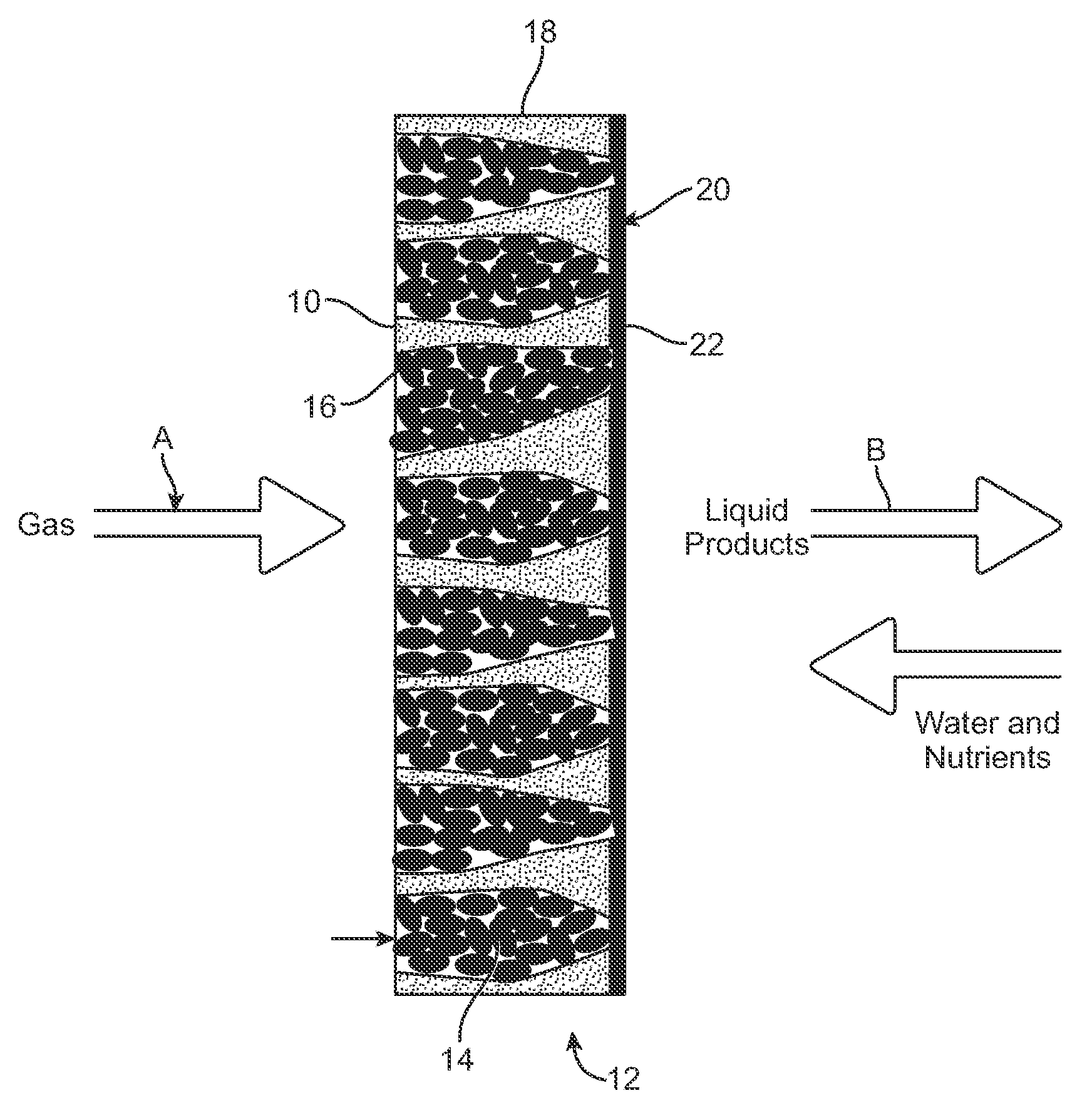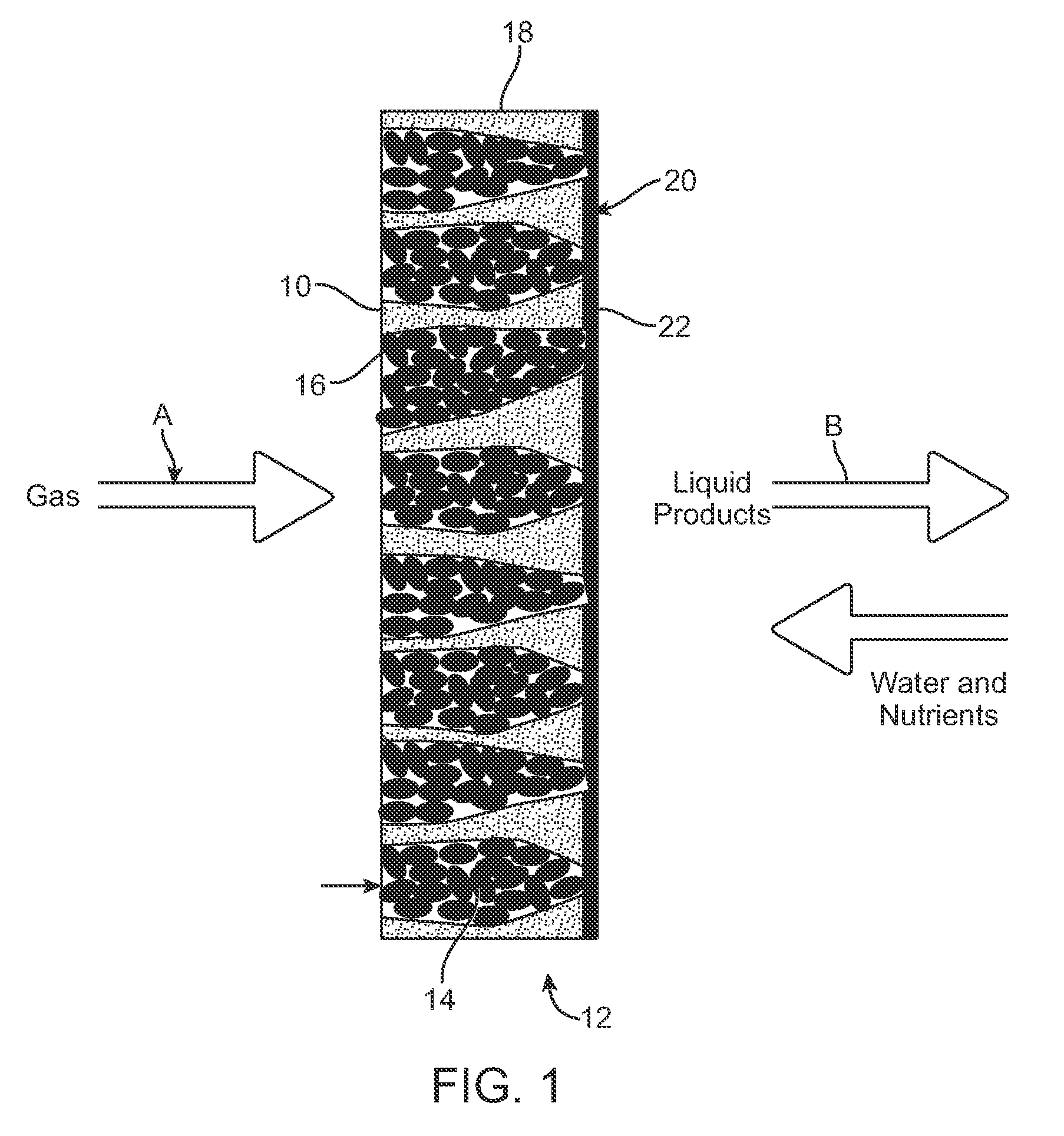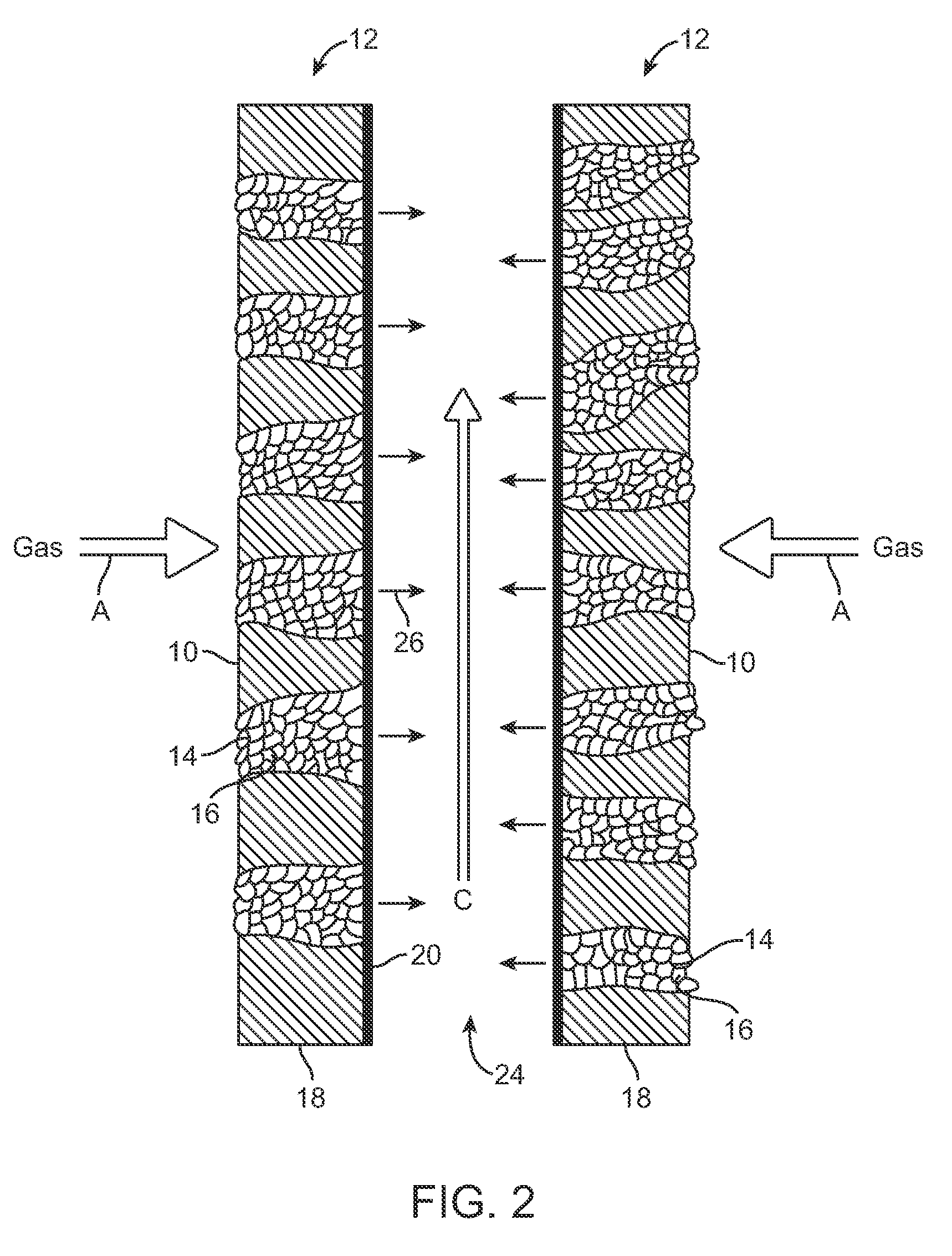Bioconversion process using liquid phase laving to enhance gas phase conversion
a bioconversion and gas phase technology, applied in biological water/sewage treatment, membranes, separation processes, etc., can solve the problems of inability of conventional yeasts to ferment csub>5/sub>sugar to ethanol, inability to achieve bioconversion, and inability to achieve the conversion of lignin components, etc., to achieve the effect of improving the production of desired liquid products
- Summary
- Abstract
- Description
- Claims
- Application Information
AI Technical Summary
Benefits of technology
Problems solved by technology
Method used
Image
Examples
example
[0083]The following example was conducted to demonstrate the practice of laving a membrane bioreactor. A MiniKros® membrane module Model M7-500S-900-01N from Spectrum Laboratories (Rancho Dominguez, Calif.) was used as a membrane bioreactor for the conversion of carbon monoxide and hydrogen into ethanol and acetate. This membrane module contained asymmetric polysulfone hollow fibers with 0.5 mm inner diameter, 0.66 mm outer diameter, and a pore size rated at 500 kDa nominal MWCO. The active membrane surface area of the module was 1.31 m2, based on the fiber outer diameter. The bio-pores had effective diameters in the range of 3 to 30 μm. The membrane cartridge had a total shell volume of approximately 290 cm3. The temperature of the membrane cartridge was maintained at 37° C.
[0084]The membrane module was connected to a 7.5-liter BioFlo® 310 Fermentor from New Brunswick Scientific (Edison, N.J.). The fermentor contained 3.0 liters of the fermentation medium, which was agitated at 100...
PUM
| Property | Measurement | Unit |
|---|---|---|
| diameters | aaaaa | aaaaa |
| thickness | aaaaa | aaaaa |
| thickness | aaaaa | aaaaa |
Abstract
Description
Claims
Application Information
 Login to View More
Login to View More - R&D
- Intellectual Property
- Life Sciences
- Materials
- Tech Scout
- Unparalleled Data Quality
- Higher Quality Content
- 60% Fewer Hallucinations
Browse by: Latest US Patents, China's latest patents, Technical Efficacy Thesaurus, Application Domain, Technology Topic, Popular Technical Reports.
© 2025 PatSnap. All rights reserved.Legal|Privacy policy|Modern Slavery Act Transparency Statement|Sitemap|About US| Contact US: help@patsnap.com



